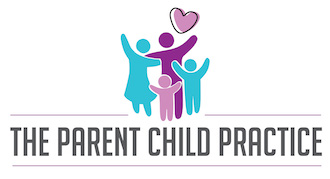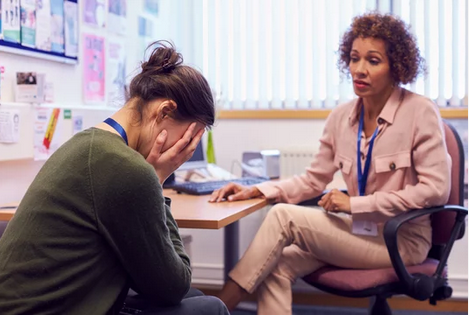The recent tragedy at Apalachee High School has left an indelible mark on the hearts and minds of students, parents, and educators alike. As a former school psychologist who continues to contract in schools, I am acutely aware of the heightened stress and emotional toll that such traumatic events can inflict on our dedicated teachers. In the wake of this tragedy, it's crucial to address the pressing need for teacher self-care and systemic support to help educators navigate these challenging times.
Understanding the Impact of Trauma on Teachers
The emotional aftermath of a school shooting can be profound, leading to symptoms of post-traumatic stress, such as intrusive thoughts, anxiety, and emotional numbness. Teachers, who are often on the front lines of providing comfort and reassurance to their students, may find themselves struggling with their own emotional well-being. It's essential to recognize that teachers are not immune to the effects of trauma and that they too need support and care.
The Importance of Realistic Teacher Self-Care
Self-care is not a luxury; it's a necessity. However, it's crucial that self-care strategies are practical and realistic, given the demanding nature of a teacher's day. Here are some actionable self-care strategies that teachers can realistically incorporate:
1. Mindfulness and Meditation: Practicing mindfulness and meditation can help teachers manage stress and anxiety. Simple techniques such as deep breathing exercises or short meditation sessions can be integrated into the school day. Even a few minutes between classes or during a prep period can make a significant difference.
2. Micro-Movements: While finding time for a full workout during the workday is not realistic or feasible, short bursts of physical activity can be beneficial. Teachers are encouraged to take a quick walk around the school building, stretch at their desks, or engage in brief exercises during breaks. These small moments of movement can help reduce stress and improve overall well-being.
3. Journaling: Writing down thoughts and feelings can be a therapeutic way for teachers to process their emotions. Teachers can keep a small journal nearby where they can jot down reflections and emotions, even if it's just for a few minutes at the end of the day.
4. Peer Support: Creating a supportive community among teachers is crucial. Regular check-ins and peer support groups can be incredibly beneficial. These can be informal gatherings during lunch or more structured meetings after school. Sharing experiences and offering mutual support can help alleviate feelings of isolation.
Navigating Vicarious Trauma
In addition to the direct impact of traumatic events, teachers are also susceptible to vicarious trauma, which occurs when they are indirectly exposed to the trauma experienced from the school violence in other schools. Teachers can experience symptoms similar to those of the students and teachers involved in the trauma at another school, including emotional exhaustion, irritability, and difficulty concentrating.
To address vicarious trauma, teachers can:
1. Set Boundaries: It's important for teachers to set emotional boundaries and recognize their limits. This might mean limiting exposure to media coverage or social media. Constant exposure to news and social media coverage of school shootings can exacerbate feelings of anxiety and distress. Teachers should consider limiting their consumption of such media to protect their mental health.
2. Professional Development: Schools should offer training on vicarious trauma and how to manage it. Understanding the signs and symptoms can help teachers take proactive steps to protect their mental health.
3. Utilize Support Systems: Encourage teachers to lean on their support systems, whether that’s colleagues, friends, or family. Having a trusted person to talk to can make a significant difference.
When to Seek Professional Help
While self-care strategies are essential, it's equally important to recognize when professional help is needed. Teachers experiencing symptoms of post-traumatic stress or vicarious trauma, such as persistent anxiety, depression, or difficulty functioning, should be encouraged to seek support from a mental health professional. Schools should have resources in place to provide access to counseling and mental health services for teachers.
If you or someone you know is in immediate distress or is thinking about hurting themselves, call the National Suicide Prevention Lifeline toll-free at 1-800-273-TALK (8255). You also can text the Crisis Text Line (HELLO to 741741) or use the Lifeline Chat on the National Suicide Prevention Lifeline website.
Moving Beyond Superficial Self-Care
It's important to acknowledge that superficial self-care strategies, such as suggesting scented candles or spa days, are not sufficient enough to address the deep emotional and psychological needs of teachers. Teachers need meaningful and sustainable support, including systemic changes that reduce workload, provide mental health resources, and create a supportive and safe school culture where preparing for gun violence is not a part of the lesson plan.
Systemic Support for Teachers
Addressing teacher self-care requires systemic changes to ensure that educators have the support they need. Here are some practical steps that schools and districts can take:
1. Access to Counseling Services: Schools should provide access to counseling services for teachers. This can include on-site counselors or partnerships with local mental health organizations to offer support.
2. Open Communication: Foster an environment of open communication where teachers feel comfortable expressing their needs and concerns. School leaders should actively listen and respond with empathy and support.
3. Professional Development: Offer professional development opportunities focused on self-care, trauma-informed teaching practices, and managing vicarious trauma. Educators should be equipped with the tools and knowledge to care for their own well-being and support their students effectively.
4. Reduced Workload: Consider ways to reduce the workload for teachers, especially in the aftermath of a traumatic event. This might include temporary adjustments to lesson plans, grading, and administrative tasks.
5. Creating Safe Spaces: Designate safe spaces within the school where teachers can take a break and decompress. These spaces should be quiet, comfortable, and free from the demands of the classroom.
6. Community Support: Engage the broader community in supporting teachers. This can include parent organizations, local businesses, and community groups coming together to provide resources and support for educators.
7. Recognition and Appreciation: Acknowledge the hard work and dedication of teachers, especially during difficult times. Simple gestures of appreciation can go a long way in boosting morale and resilience.
Recommended Resources for Teachers
1. Books:
"Teaching on Days After: Educating for Equity in the Wake of Injustice" by Alyssa Hadley Dunn
"Supporting the Wounded Educator" by Joe Hendershott and Dardi Hendershott
2. Articles and Online Resources:
"Teaching in Traumatizing Times: Navigating Vicarious Trauma in the Classroom" by
Clarity Child Guidance Center
"Why We Need to Talk About Teacher Trauma" by EdSurge
In conclusion, supporting our teachers in the aftermath of a tragedy like the one at Apalachee High School requires a multifaceted approach. By prioritizing the well-being of our educators, we can create a more resilient and compassionate school community that is better equipped to navigate the challenges of these difficult times. Let’s rally behind our teachers and provide them with the care and support they so rightfully deserve.





